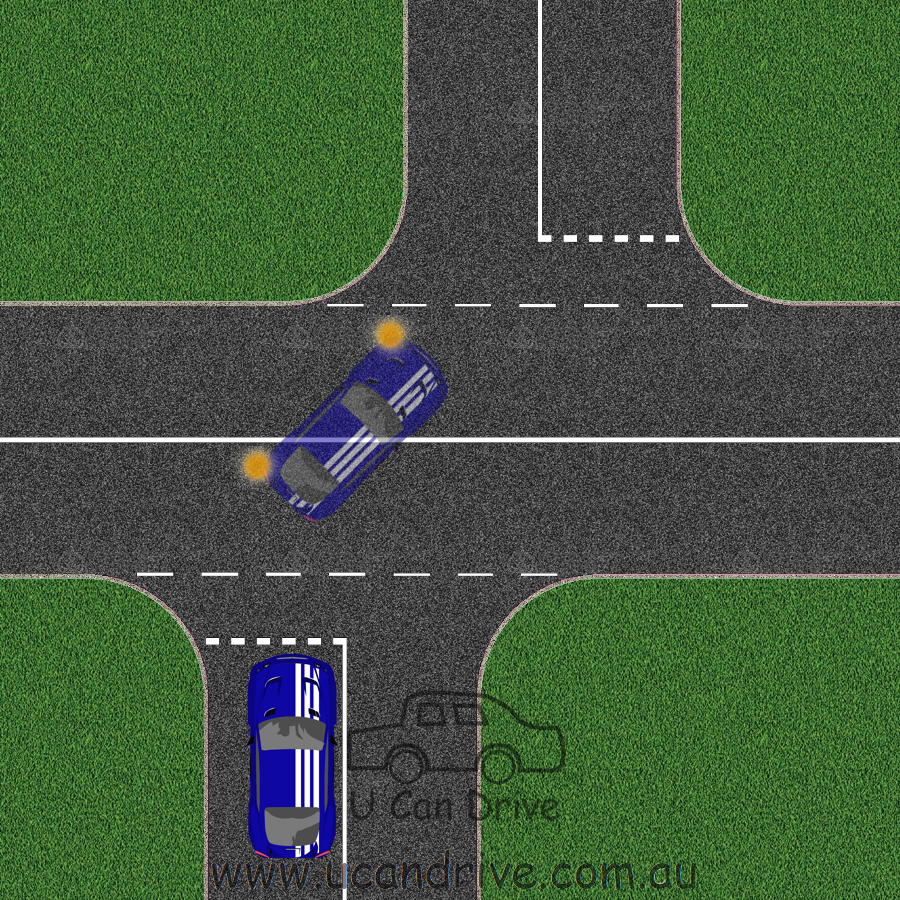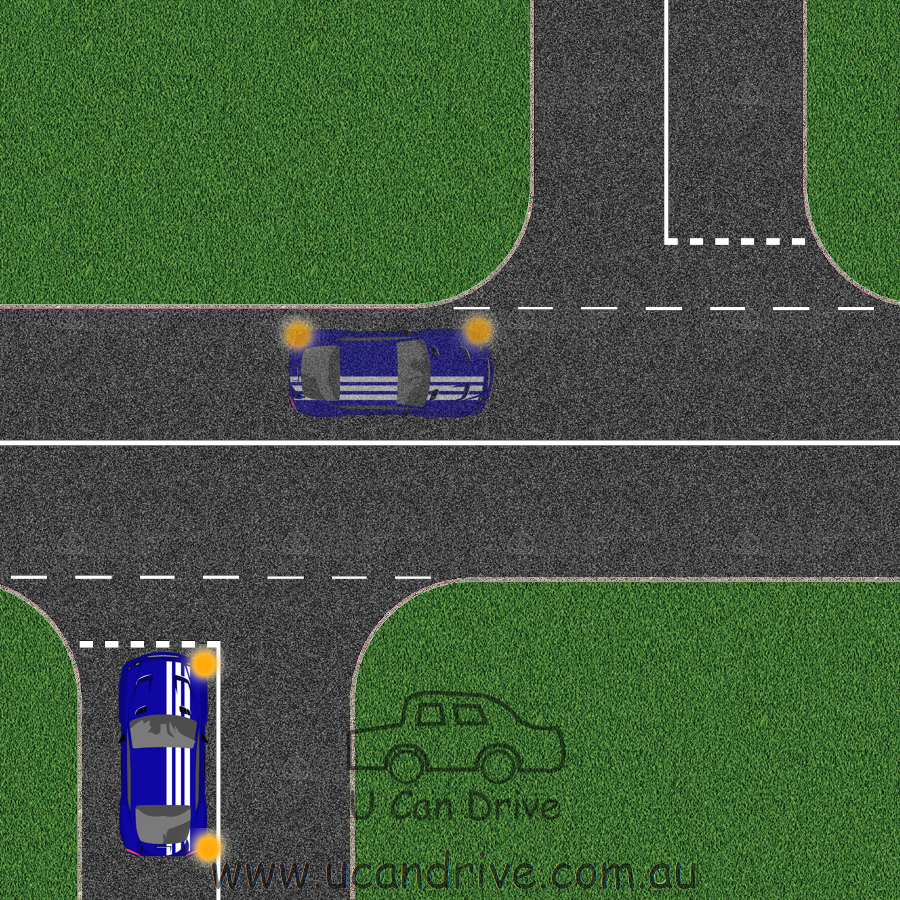Staggered Vs Combination Intersections
This page has been put together using Qld road rules legislation as of 2009.
It is in no way purposed or designed to be used for legal defense or legal advice!
It is designed to help you know the road rules and do the right thing.
Not to justify bad driving behaviours.
When coming to an intersection sometimes the "crossroads" doesn't line up clearly. In these cases it can be a little confusing how to proceed. Queensland regulation are not clear on this issue so the following is my best interpreation of the situation giving the best advice I can without clear guidelines to follow.
Staggered Intersection

The image on the right is of a Staggered Intersection.
In this example the Blue Car's should not indicate to continue in the mostly straight ahead direction.
Because the car can move through the intersection without straightening on the intersecting road it is essentially travelling straight ahead as such indicating is not required.
However... I would still indicate left as soon as you are moving across the intersecting road so it is clear to all traffic what your final intention is.
Indicating Right when you are approaching and/or waiting at the Give Way can cause confusion about your actual intent. Any traffic opposite may treat you as if you are turning right and treat you differently.
Combination Turn
The image to the Left is of a Combination Turn.
This is essentially two T-Junctions approaching the continuing road from opposite directions.
In this situation I would recommend that you indicate Right as you approach and/or wait at the Give Way, and then indicate Left as you cross the center line.
As the "continuing" road doesn't line up at all and the car is able to fully turn into the intersecting road it is essentially making TWO turns, one to the right and one to the left.
To do this clearly and safely both turns should be indicated for and Give Way rules applied accordingly.
When does the Staggered become a Combination?
This is where the regulations become unclear, there are no set guidelines to distinguish between the two and my opinon of this has changed over the years.
Previously I would have told you to use the curb lines, if the roads do not line up I would have said it is a Combination turn and therefore indicating for both turns is essential, however if the roads line up, even a little bit there should be no indicaating.
I have changed this approach to say it's about being able to line the car up on the intersecting road. Why?
Because of how traffic behaves! I have found if you are indicating Right, any traffic on the opposing side will treat you as if you are turning Right. While in most circumstances this isn't really a problem, it causes confusion and uncertainty. As such not indicating presents a clearer message to other traffic of what your intent is.

